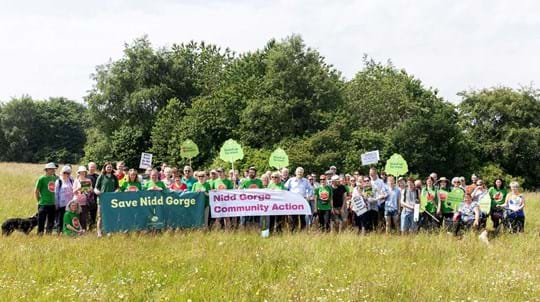
Protecting trees and woods
Campaign with us
Together we can stand up for the environment and safeguard the UK's woodland heritage for our future.
Despite nature's recovery being impossible without them, just 7% of UK woods are in good condition for wildlife. Our new reports set out what needs to be done to restore our woods and trees in England, Scotland, Wales and North Ireland, for both wildlife and people.
Our reports, Trees and woods: at the heart of nature recovery in England, Scotland, Wales and Northern Ireland, show the central role that native natural and semi-natural woods and trees must play in restoring nature.
Despite nature's recovery being impossible without them, just 7% of UK woods are in good condition for wildlife, and many are a shadow of what they could be.
If we don't restore our damaged, degraded and disappearing woods and trees, nature will continue to free-fall. We must:
To nurture resilient landscapes that will harness nature's recovery, we must work together, underpinned by actions only governments can take.
We urgently need to:
In our reports, we identify the things that governments and local authorities must do to achieve this.
We can't restore nature by relying on one single approach. Policymakers must consider the role of everything from a single tree to an entire landscape.
The recommendations in our report are based around helping nature recover at three different scales: landscape scale, woodland scale, and tree scale.
Landscape scale nature recovery means working to protect and bring back nature across the whole landscape, rather than in isolated pockets of land. It isn’t just about nature reserves or specific woodlands – it’s about the trees, hedges, rivers, agricultural land, cities and much more between them. Together, they add up to one integrated landscape that supports much more wildlife and helps it (and us) become more resilient to climate change.
Woodland scale nature recovery isn’t just about planting trees. It’s about caring properly for the woods we already have: balancing groves of denser trees with more open areas; encouraging natural regeneration; creating glades for flower-rich grasslands and ponds; leaving deadwood to be used by wildlife. It’s about boosting the health of the very soil the trees grow from.
Individual trees and groups of trees outside woods – scattered through the landscape in hedges, fields, churchyards, gardens, parks and housing estates – have a hugely important yet unsung role in nature recovery. Take the oak tree – a single old oak can support 2,300 species, making it an ecosystem in its own right.
We’re running out of time to put nature into recovery.
We desperately need the government and local authorities to take meaningful action, and we need your help to make it happen.